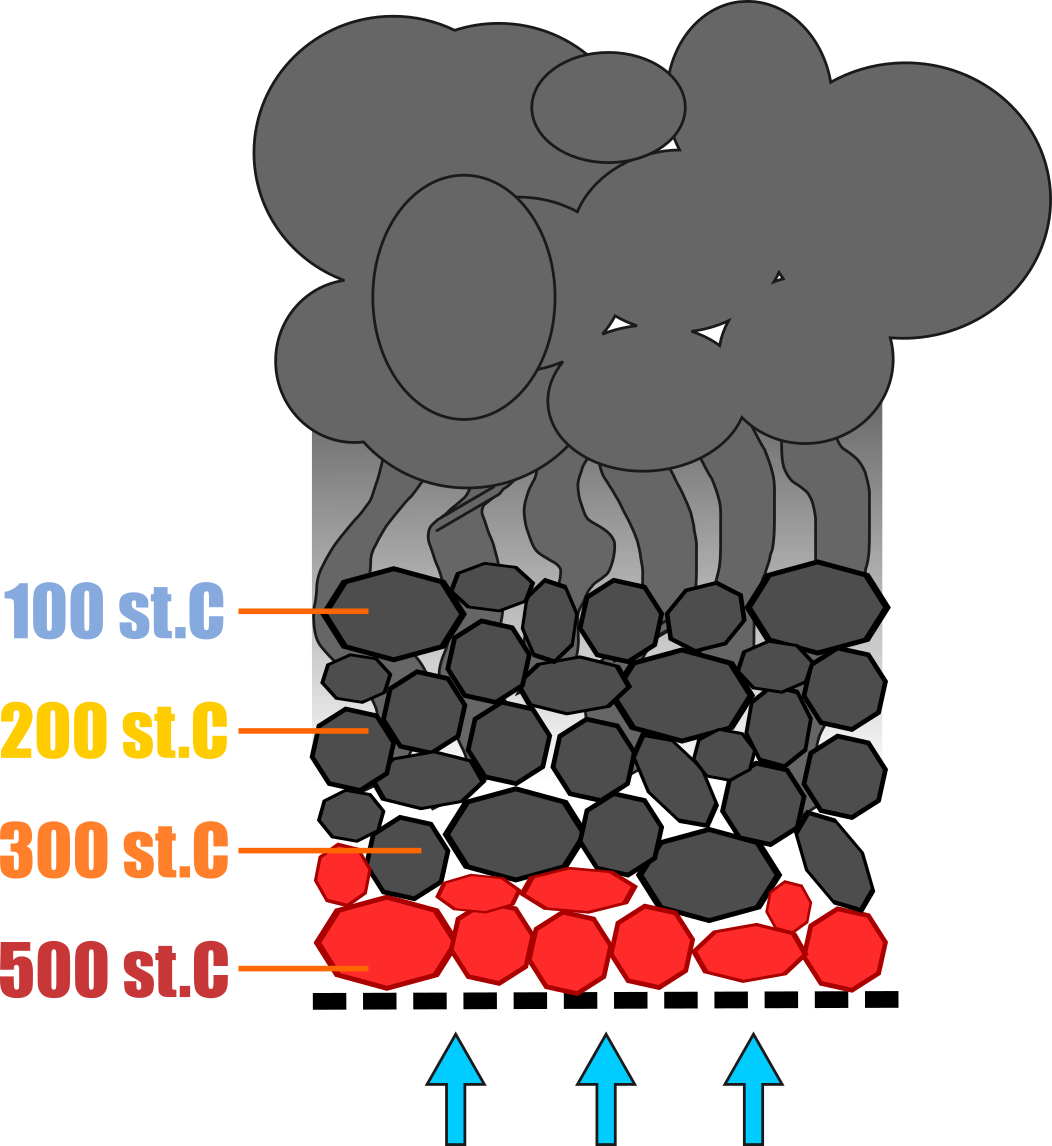 COAL COMBUSTION PROCESS
COAL COMBUSTION PROCESS
The course of coal combustion in furnaces has 3 periods:
a) evaporation and separation of volatile parts, that is, the production of a gas with properties similar to those of light gas; coke is formed from the residue; this process is called carbon degassing,
b) combustion of the produced gas,
c) further degassing of coke and separation of non-flammable minerals, remaining after combustion as ash.
The volatile components released during the first period of combustion burn with a flame above the carbon layer for a short time. The coke burns slowly on the grate without a flame. After subtracting the ash and water components contained in coal from coal, there remain volatile parts approx 45% but pure coal (Root - C.) 55 %. And so 45% coal burns quickly as a gas, the remaining 55 % as coke. The first combustion period requires a greater supply of air to the furnace, otherwise the coal will not burn properly and unburned carbon particles will escape into the chimney causing losses due to incomplete fuel consumption. For a good combustion of coal in the firebox, the following conditions are necessary:
a) There should be enough air flowing into the fuel, its main mass should flow through the grate and fuel,
b) furnace capacity (combustion chambers) it should be large enough and well protected against heat loss,
c) volatile particles escaping from the burning fuel should be able to mix well with air and burn at an appropriately high temperature,
d) the charcoal should be placed on the grate in a sufficiently thick layer 10 Cm,
e) the air supply to the furnace should be properly regulated. However, it is not easy to constantly regulate the air supply, especially in the later combustion period, when the coal layer in the firebox decreases. In order to prevent the furnace from cooling down too much by the excess of cold air, the air supply should be appropriately reduced, otherwise the combustion process will be negatively affected. A bright flame and no smoke is a visual indicator of that there is sufficient air in the furnace and that the combustion process is correct. If the flame is yellow, increase the air supply to the furnace. The intensity of coal degassing in the furnace depends not only on the air supply and the furnace temperature, but also on the coal assortment. The finer the coal is, the faster it degasses.
Secondary cold air flow through the furnace door, while smoking, it is, as already explained above, harmful. For these reasons, it is recommended to use, described later in the guide, device for secondary combustion of coal. This device provides a secondary supply of pre-heated air to the furnace, which has a positive effect on degassing and faster burning of coal in the grate.